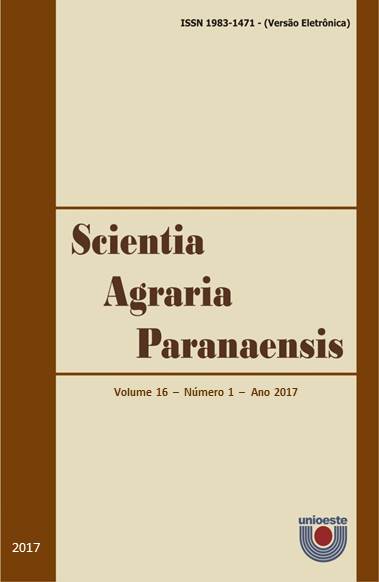Hygienic and sanitary quality of honey produced by Apis mellifera and Tetragonisca angustula and the need for regulatory standard
Palabras clave:
stingless bees, legislation, honey, quality.Resumen
This work aimed to evaluate and compare the microbiological quality of honey samples of the species Apis mellifera and Tetragonisca angustula collected by different methods, in urban and rural areas of Ariquemes and Alto Paraíso city, in Rondônia State. Brazil. Were performed analysis for count coliforms at 35 ºC and 45 ºC, molds and yeasts and the presence of Salmonella sp. The collect of honey from A. mellifera bee was by centrifugation (rural area) and press with hands (urban area). The honey of T. angustula bees was collected with disposable syringe (rural area) and suction pump (urban area). Two samples presented total coliforms (3.0x102 and 2.1x103 NMP g-1) and one of them thermotolerant coliforms (3.0x102 NMP g-1). No presence of Salmonella was detected in this study, while the count for molds and yeasts was < 3.0 UFC g-1 for all samples. The results showed differences among the sites and collect methods. The discussion of the results was by comparison with tolerable limits for other types of foods, with composition and/or physico-chemical characteristics similar to honey. This is because, the current Brazilian legislation not establish microbiological standards for honey, although there is a regulation that deals with sensorial and physico-chemical requirements, but only of the honey produced by A. mellifera, excluding the more than 400 species of stingless bees in the country, including T. angustula.
Descargas
Publicado
Cómo citar
Número
Sección
Licencia
Aviso de Direito Autoral Creative Commons
Política para Periódicos de Acesso Livre
Autores que publicam nesta revista concordam com os seguintes termos:
1. Autores mantém os direitos autorais e concedem à revista o direito de primeira publicação, com o trabalho simultaneamente licenciado sob a Licença Creative Commons Attribution que permite o compartilhamento do trabalho com reconhecimento da autoria e publicação inicial nesta revista.2. Autores têm autorização para assumir contratos adicionais separadamente, para distribuição não-exclusiva da versão do trabalho publicada nesta revista (ex.: publicar em repositório institucional ou como capítulo de livro), com reconhecimento de autoria e publicação inicial nesta revista.
3. Autores têm permissão e são estimulados a publicar e distribuir seu trabalho online (ex.: em repositórios institucionais ou na sua página pessoal) a qualquer ponto antes ou durante o processo editorial, já que isso pode gerar alterações produtivas, bem como aumentar o impacto e a citação do trabalho publicado (Veja O Efeito do Acesso Livre).
Licença Creative Commons
Esta obra está licenciada com uma Licença Creative Commons Atribuição-NãoComercial-CompartilhaIgual 4.0 Internacional, o que permite compartilhar, copiar, distribuir, exibir, reproduzir, a totalidade ou partes desde que não tenha objetivo comercial e sejam citados os autores e a fonte.


